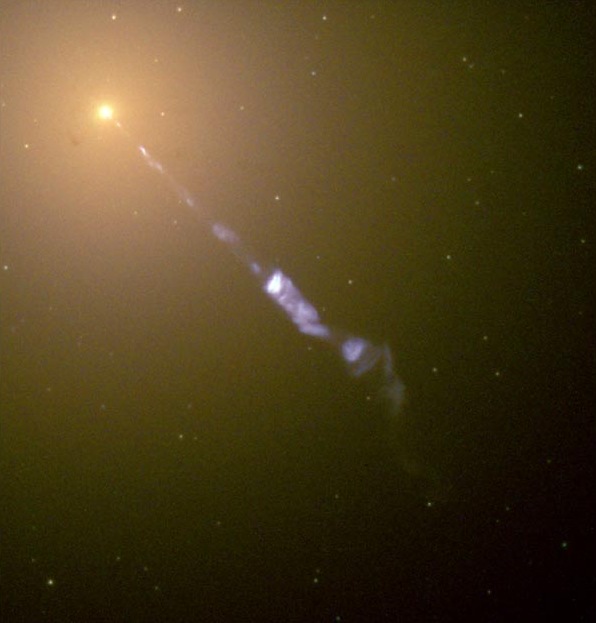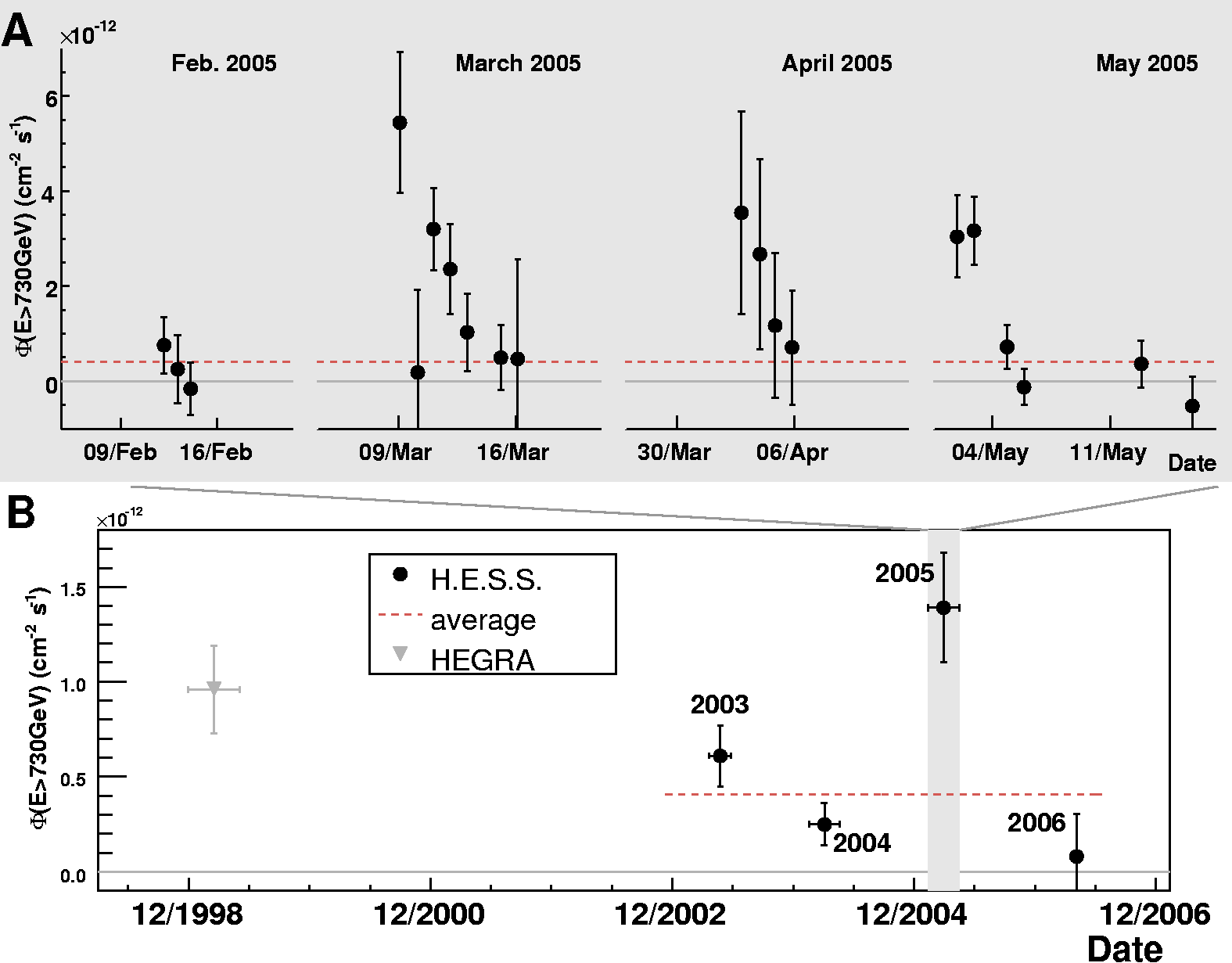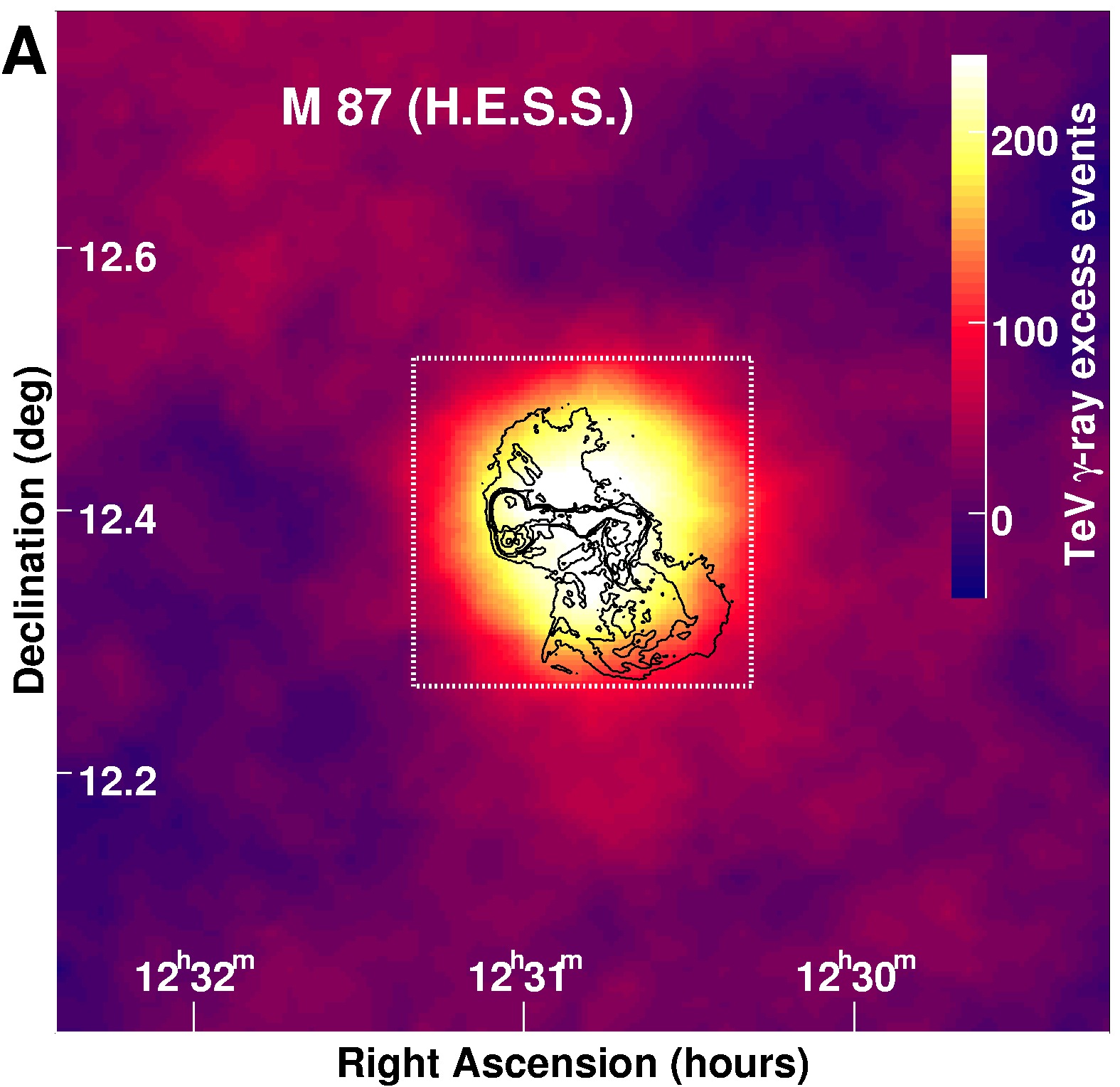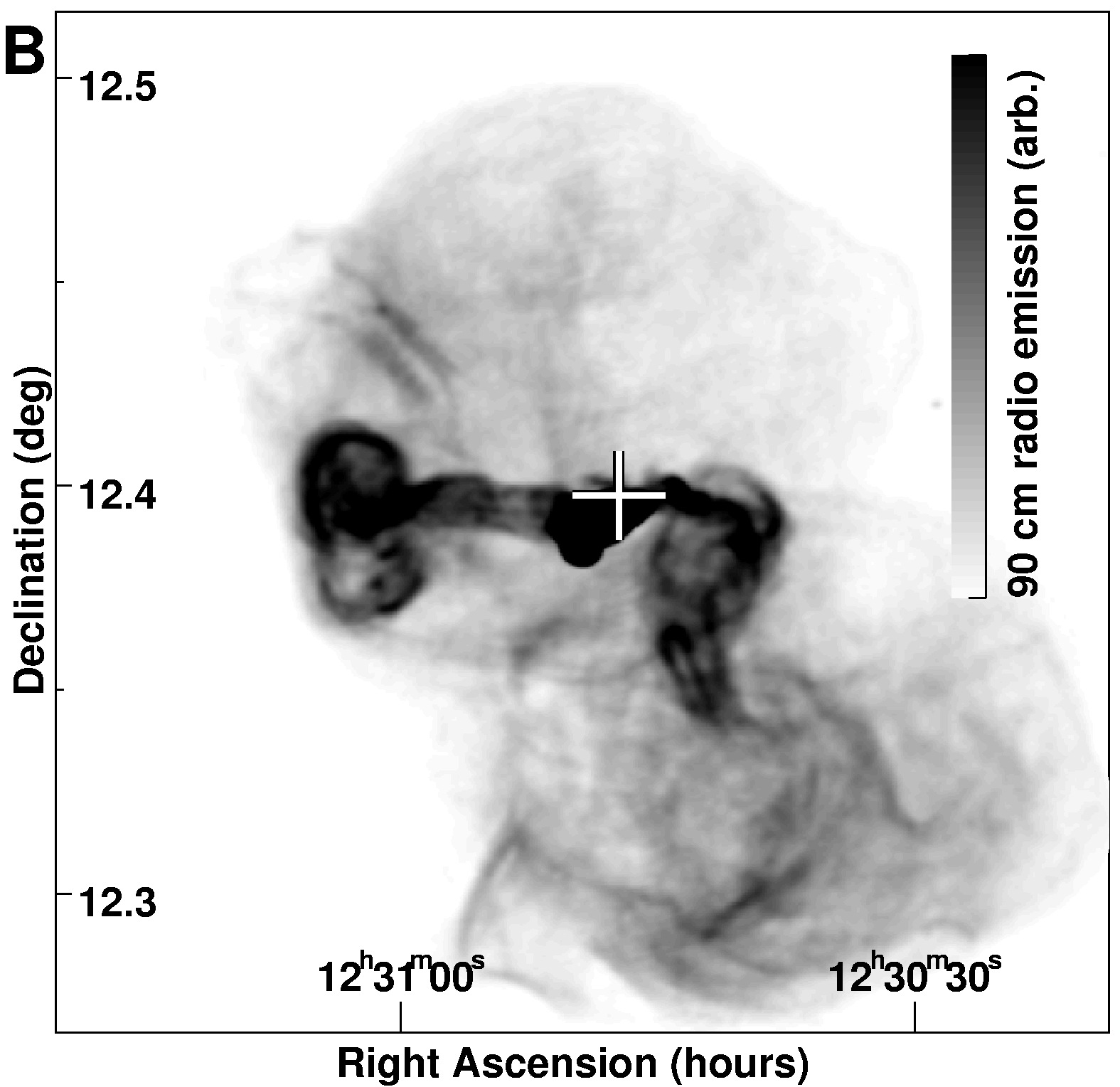An international team of astrophysicists from the H.E.S.S. collaboration has announced the discovery of short-term variability in the flux of very-high-energy (VHE) gamma rays from the radio galaxy M 87. In Namibia, the collaboration has built and operates a detection system, known as Cherenkov telescopes, which permits these gamma rays to be detected from ground level (see notes). Pointing this system at a nearby galaxy, M 87, the team has detected VHE gamma rays over the past four years. The real surprise is, however, that the intensity of the emission can be seen to change drastically within a few days on occasion.
The giant radio galaxy M 87:
This galaxy, located 50 million light-years away in
the constellation Virgo, harbours a super-massive
black hole of 3 thousand million solar masses
from which a jet of particles and magnetic fields
emanates.
However, unlike for previously-observed
extragalactic sources of VHE gamma rays
— known as Blazars (see box) —
the jet in M 87 is not pointing towards the Earth but
is seen at an angle of about 30°.
In Blazars, gamma rays are believed to
be emitted in the jet, collimated around
the jet direction and boosted in their
energy and intensity by the relativistic
motion of jet particles.
M 87 therefore represents a new type of
extragalactic gamma-ray source.
A first indication of VHE gamma-ray emission from M 87 was seen in 1998 with the HEGRA Cherenkov telescopes (one of the precursor experiments to H.E.S.S.). With the H.E.S.S. results these indications are now confirmed with greater confidence. The flux of VHE gamma rays from M 87 is quite faint; no other radio galaxy was so far seen in VHE gamma rays, probably because most are more distant than the relatively nearby M 87.
What short time-scale variability tells us:
The time-scale of variability is an indicator for the maximum size
of the emission region.
Since gamma-rays from the rear end of the
emission region travel longer until they reach us, variability time scales
cannot be much shorter than the time gamma rays require to cross the
emission region. Such variability measurements are frequently used to
constrain the size of the emission site in distant objects, often to
greater accuracy than by measuring the object's size based on the angular
extension in the sky. The few-days variability time-scale seen by H.E.S.S.
in M 87 is extremely short, shorter than detected at any other wavelength.
This tells us that the size of the region producing the VHE gamma rays is
just about the size of our Solar system (1013 m, only about
0.000001 % of the size of the whole radio galaxy M 87).
"This is not much larger than the event horizon of the super-massive black
hole in the centre of M 87" says Matthias Beilicke,
a H.E.S.S. scientist working at the University of Hamburg.
This observation makes the immediate vicinity of the central black hole of M 87 the most likely place for the production of VHE gamma rays; other structures in the jets of M 87 tend to have larger scales. The physics of the production processes have yet to be determined, and completely novel mechanisms can be invoked due to the proximity of the black hole which this discovery by the H.E.S.S. team has demonstrated. It is likely that we are dealing with a different production mechanism than for the Blazars, whose jets point towards us. In this region near the black hole, the matter which is accreted from the black hole is also creating the relativistic plasma jet — a process which is generally not yet fully understood. That gamma-rays can escape from this violent region may appear surprising, but is possible since the black hole in M 87 is accreting matter at a relatively low rate, compared to other black holes. Also, one cannot exclude that relativistic effects such as those taking place in other extragalactic sources contribute at some level, but given that the jet is not pointing towards us, large relativistic effects are unlikely.
H.E.S.S. leading the way:
With this and preceding discoveries of
extragalactic sources H.E.S.S. is leading the way in
understanding the processes involved how these
extraordinarily energetic photons are produced.
The radio galaxy M 87 is an excellent
laboratory for studying the core of these galaxies, with their supermassive
black holes which act as engines to accelerate particles to extremely high
energies, giving out VHE gamma rays in the process. This object can be
studied, and compared to the more numerous, but more distant Blazars where
the jet obscures our view of the central
source. For M 87, we now know that we have an clear
view of the central engine with H.E.S.S., thus leading to a
better understanding of all extragalactic VHE gamma-ray
sources.




